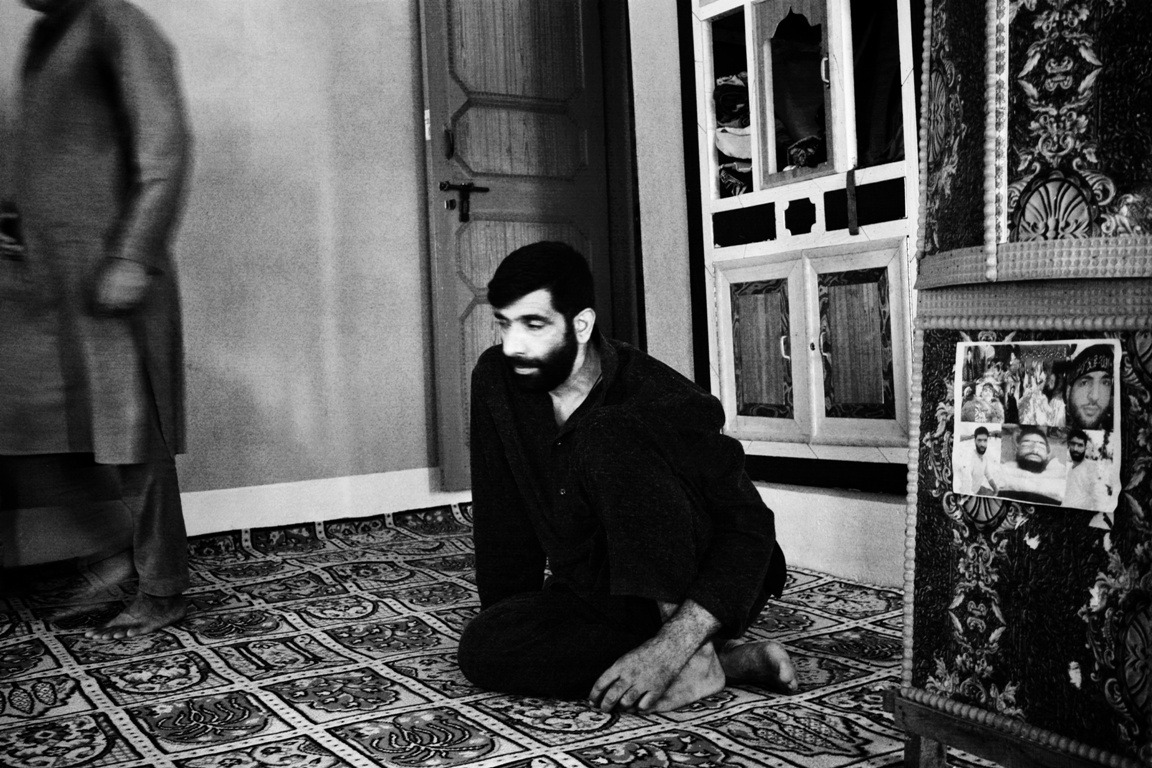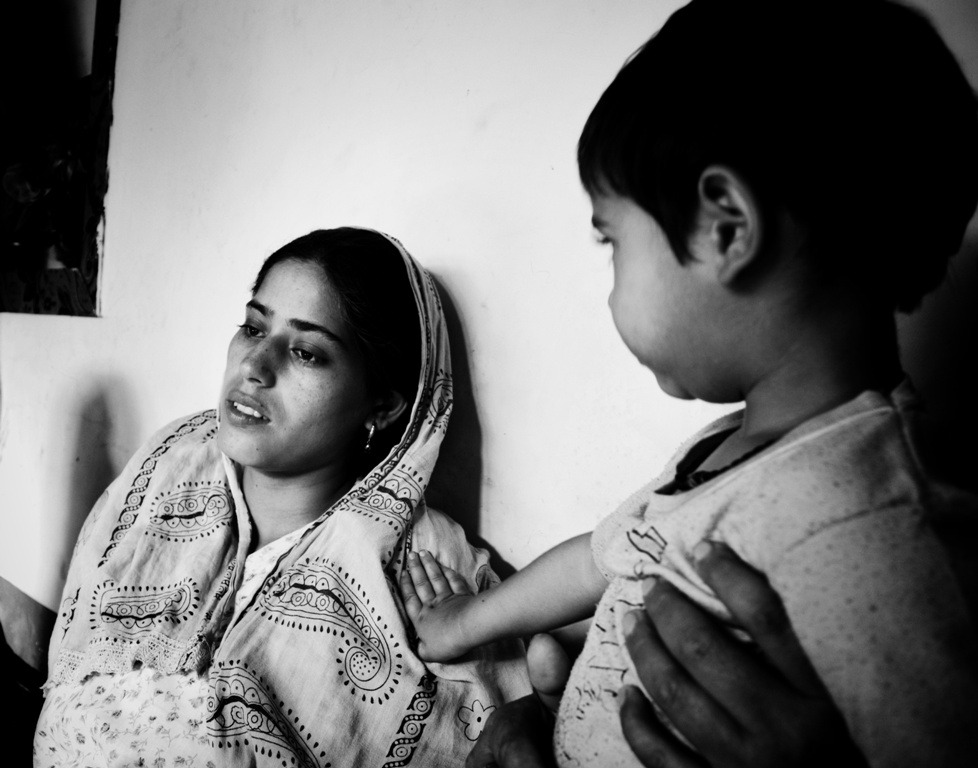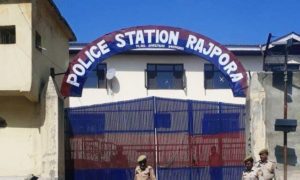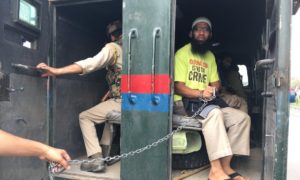Behind every painful photograph, there’s a traumatic journey that a journalist on the ground goes through, and experiences. One such painful moment unfolded in Pulwama this summer when a photojournalist went to cover her assignment and ended up agonizing herself.
It was my first ‘conflict’ assignment and I was not prepared. There were many questions that I was asking myself: What if I am caught by the armed forces? What if the family members of the victim refuse to talk to me?
But when I met her, she did talk. She told me how she was feeling. She told me about her pain, and that stayed with me.
I remember traveling to the restive Pulwama district with my colleagues, all of them males. It was an afternoon of a sunny August. I was traveling to photograph the family of Firdous Ahmed Khan, a laborer killed when Indian armed forces opened fire to disperse the protesters amidst a gunfight between rebels and Indian army at Harkipora area in Kakpora village of South Kashmir.
He was not a stone pelter nor was he among the protesters.
That afternoon when I went to his home, it happened to be my first experience to cover the aftermath of a civilian killing.
Being a woman, it was very hard for me to cover this story. I had to control my emotions.
When we were near Firdaus’s village, I felt terrified. Empty streets and closed shops. An eerie calm.
I hardly saw people along the road. We didn’t know the exact address of Firdaus’s house. So when I saw a young woman near the water canal, I asked my colleague to stop the motorcycle, and stepped down.
She pointed towards a house that was not very far. As I entered into the lawn, I heard lamenting. My heart started beating faster.
Putting my cellphone in my bag, we entered into the house.
A few men were sitting in a room, and among them was Firdaus’s elder brother. He sat with his back against the wall and eyes glued to the ceiling. I asked myself: Is he looking at the ceiling or at God? He was silent until someone said, “Firdous.”
He eyes welled up and he said in a croaked voice, “My brother was a laborer, he was not involved in stone pelting nor was he protesting. He didn’t have a gun or a stone in his hand. He was just standing there and they shot him. It was a targeted killing. We want justice.”

FPK Photo/Masrat Zahra.
During the uprising in 2016, Firdaus had purchased a commercial vehicle. Because of the continuous political upheaval, there was no source of income. So he would cultivate vegetables and then transport them to Jammu.
His brother was sobbing. It was hard for me to see him cry like that. It made me realise how fragile this conflict has made us.
“On the fateful day,” his brother said, “Firdaus was supposed to travel to Jammu, but he couldn’t because of the protest. Hearing the slogans and noises of clashes, he went out to access the situation. The paramilitary forces came and shot him dead.”
Firdous’s widow was in another room. While walking through the corridor, I could hear wailing and crying; chilling me to my bone. Her room was silent. There were just two people in the room: Firdous’s wife and another woman.
The woman sitting next to her said that she was pregnant and that day her ninth month of pregnancy had just begun. I was shell-shocked. I had come here to document the story, click pictures but I didn’t know how to do it anymore. I could relate to her pain, that so many women of conflict often suffer from. I did not want to do anything else, but empathise.
She was sitting with her back against the wall unaware of her surroundings. Her eyes a world of sadness, a world that was weeping. The tears flowed down the path made by the first one. She was looking out of the window, to the past, and what could’ve been.
The world stood still in that room.
And then Firdous’s 2-year-old daughter was carried into the room by a woman. She placed her in front of Firdous’s widow, her mother.
Falak, her daughter, picked a hand fan and started waving it to comfort her mother. Her gaze finally shifted from the window and fell on her daughter.

FPK Photo/Masrat Zahra.
I realized how big a heart, a mother’s heart is, and how great her love for her children is. I had to document it because this was not a story of conflict. Her smile was the symbol of hope and courage in the catastrophe that had befallen her, and us. So I managed to click some pictures.
***
I have always wanted to go to places where no one else dared to go, like war-zones, conflict-zones and wanted to cover in-depth conflict related stories because I can’t accept that people’s tragedies can be silenced, simply because no one dares to narrate them.
Photojournalism is the profession of the brave, the passionate and of those who are committed to the mission of bringing to the world information that is fair, important and accurate.
A woman photojournalist can tell stories that are hidden from the male eyes, and would otherwise never be covered.
Women choosing the field of conflict photography, or war photography in this region is a relatively new development, but they have to play a vital role in the development of photography. While women still remain a minority in this male-dominated field, they can often bring out something unique through their pictures.
“Access” can sometimes be in women’s favour. That’s why, before I click a photograph, I try to build a rapport with my subject, whenever possible, because pictures express emotion and emotions are intimate.
So I always look for that intimate moment that says it all.
***
Other people started coming into the room. It was getting crowded. We decided to leave the room. Falak followed us. We were shown Firdous’s bedroom. The room had witnessed a man it wouldn’t again. He had gone like many others before him.

FPK Photo/Masrat Zahra.
Falak climbed onto the bed. The bed was not made. She laid atop one of the blankets. She was a picture of innocence amidst of what is happening around her. I clicked several photographs.
After leaving the bedroom, we again went into the room where the young widow was inconsolable. It was crowded. We asked Firdous’s sister to bring a picture of Firdous.
As the picture was brought into the room, everyone started to cry. She placed it in Firdous’s widow’s lap.
I wanted to cry, too.
This is my Kashmir, my people, who are suffering, who are in pain but this pain and suffering needs to be told.
With tears in my eyes I did my work, I clicked photographs.








